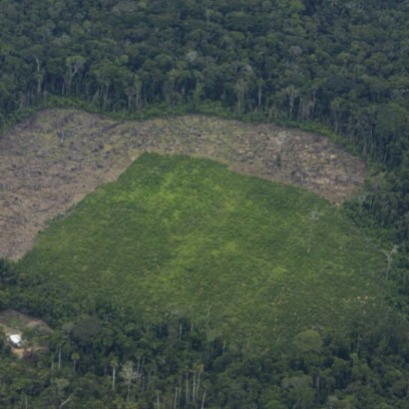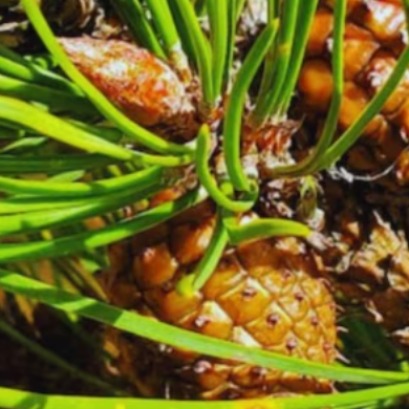
Deforestation in the Amazon: Peru has lost a forest space equivalent to 11 times the size of Lima
The report rescues information that dates from 2001, until 2023. The most alarming case is deforestation in the Ucayali river basin and its tributaries
The Peruvian Amazon has requested more than 3 million hectares of forest between 2001 and 2023, an extension comparable to eleven times the area of Metropolitan Lima. A report prepared by the Foundation for Sustainable Conservation and Development (FCDS Peru) indicates that 70% of recent deforestation is concentrated in only four critical areas. Ucayali, Loreto, San Martín, Huánuco and Madre de Dios are among the regions with the greatest impact on this process, which intensified between 2019 and 2023 with the disappearance of 602 thousand additional hectares. The analysis indicates that deforestation in the Ucayali River basin and its tributaries is the most alarming, covering almost half of the lost Amazon total. The study also highlights how illegal activities and the change in the use of land become the main drivers of this environmental problem, while indigenous communities and protected areas show different realities in the face of forest destruction. Agricultural expansion, mining and illegal crops according to the deforestation report, change of land use and illegal activities in the Peruvian Amazon, much of the recent deforestation is located in areas where land tenure has not been formally defined. In these territories, which gather 1.45 million hectares of missing forests, extractive and agricultural activities are carried out in the absence of clear state control mechanisms. The investigation details that 49% of the deforest area ends up converted into agricultural and livestock surfaces, while 43% evidence of any natural recovery. The expansion of coca leaf culture is especially related to small plots, of less than 5 hectares, replicated in districts characterized by the high density of these sowments. Thus, the Ucayali basin congregates 45% of Amazonian deforestation since 2001, partly driven by critical road corridors and illegal activities associated with coca. For its part, the southern Amazon - mainly mother of God and surrounding areas of Cusco and Puno - records about 388 thousand hectares deforest, especially during the last five years. This area is more closely linked to the expansion of illegal mining, highlighting the cases of Tamopata, Manu and Tahuamanu.The report also identifies the Marañón Middle Basin, located between Amazonas and Loreto, as a new focus of deforestation due to the proliferation of drug trafficking and illegal mining. Between 2019 and 2023 there disappeared there more than 51 thousand hectares of forests. The bass Amazonas, located on the triple border with Colombia and Brazil, although it registers a lower loss (36 thousand hectares), presents high vulnerability due to its exposure to transnational crime networks and illegal crops, indigenous units and protected areas: opposite realities The progress of deforestation also directly affects indigenous communities of the Amazon. According to the study, 19% of the national loss of forests correspond to territories of native communities, which means more than 582 thousand hectares deforested. These areas face invasions, land traffic, felling and illegal mining, and the pressure of illicit crops that alter their ways of life and put at risk the rights of native peoples. In contrast to what is presented, there are two spaces that have reduced levels of deforestation. These are the protected natural areas and concessions for conservation, ecotourism and reforestation. Less than 5% of the total Peruvian Amazon lost corresponds to these spaces where there are formal administration and surveillance mechanisms. Peruvian Amazon is maintained as one of the main bombs of biodiversity and ecosystem services worldwide, but their vulnerability to deforestation shows the urgency of comprehensive policies that guarantee the protection of the forest, promote sustainable development and ensure respect for the rights of communities that depend on this territory.
IT MAY INTEREST YOU
 The DNA of forests: they discover what makes a tree resist drought
The DNA of forests: they discover what makes a tree resist drought
An international team, with the participation of INTA and Conicet, discovered that genetics can be decisive for trees to better resist droughts
 Combilift Unveils the 2025 Christmas video “Twelve Days of Christmas” – with a Twist!
Combilift Unveils the 2025 Christmas video “Twelve Days of Christmas” – with a Twist!
Monaghan, Ireland – November 2025
 Native forest | In Misiones, controls are tightened on routes for illegal transport of native wood, logging of forests without permits and fraudulent digital guides
Native forest | In Misiones, controls are tightened on routes for illegal transport of native wood, logging of forests without permits and fraudulent digital guides
Informality in forestry activity in Misiones was once again evident, the culture of operating illegally is a historical problem, and the Ministry of Ecology and Renewable Natural Resources carries out the corresponding control and inspection operations in the regulation of productive activity and sustainable management for the use of native forests.




















